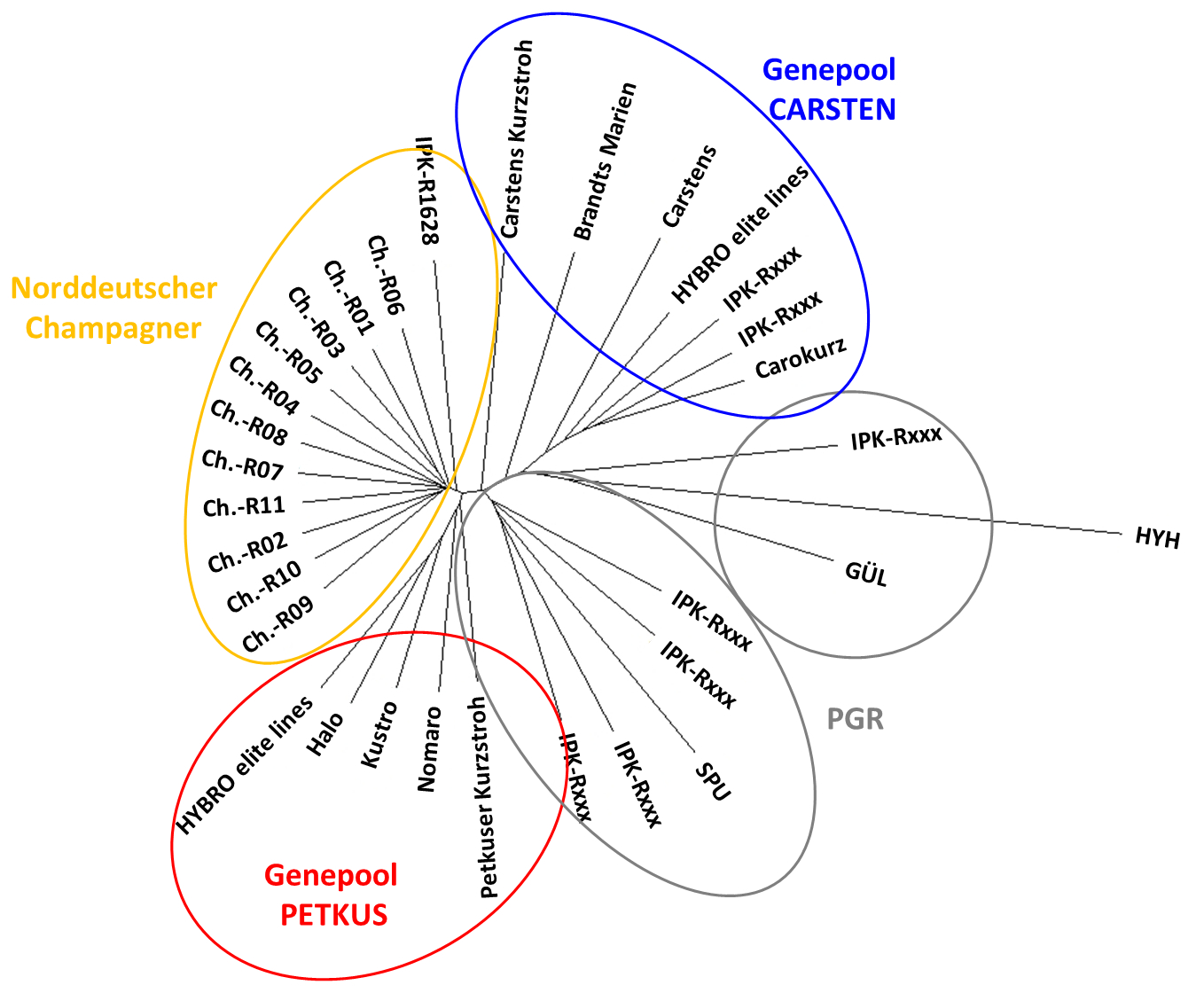
In rye, two genetically divergent genepools, PETKUS and CARSTEN, enable the systematic exploitation of heterosis by hybrid breeding since more than four decades. Rye landraces represent a rich resource of currently untapped native diversity for broadening the genetic base of both heterotic genepools. High density DNA fingerprinting provides efficient means to illustrate genetic relationships between rye landraces, as demonstrated by the RYE-SUS team members HYBRO and JKI in collaboration with VERN e.V. for a panel of landraces maintained on farm as well as ex situ. DNA profiles based on a novel custom rye SNP array provided information on the genetic relationships between the entries and enable to systematically capture favorable alleles for quantitatitve traits while maintaining the well established high-yielding heterotic patterns.
With respect to the survival rate after winter the phylogenetic relationships between 'Halo', 'Kustro', 'Petkuser Kurzstroh', 'Carokurz' and 'Carstens' indicate, that in both heterotic genepools a broad genetic diversity is available, that is useful to potentially identify multiple alleles and mechanisms of winterhardiness in rye within RYE-SUS..

